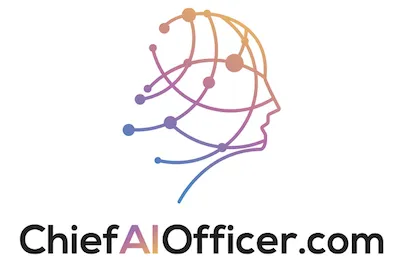
Why JPMorgan's AI Transformation Makes Every Other Bank Look Like They're Operating in Slow Motion
How JPMorgan Gave 200,000 Employees AI Tools and Cut Research Time by 83%
JPMorgan Chase has fundamentally re-engineered its operations across all major divisions, making artificial intelligence a core business function rather than a lab experiment or side tool. While competitors debate AI implementation risks, JPMorgan is running over 400 AI use cases in production and has given more than 200,000 employees access to their flagship generative AI platform.
This isn't incremental technology adoption or departmental pilot programs. This is comprehensive business transformation that demonstrates exactly how market leaders approach AI integration when they prioritize competitive advantage over cautious planning.
The results speak for themselves: 83% reduction in research time, enhanced fraud detection capabilities, optimized trading strategies, improved credit risk assessment, and revolutionized wealth management operations. While other banks form AI committees, JPMorgan is documenting AI-driven business results.
The Enterprise Scale That Redefines Competition
More than 200,000 employees have access to JPMorgan's LLM Suite, which saves several hours per week on routine tasks for many users. This enterprise scale represents AI implementation that most organizations haven't attempted across their entire workforce.
The scale achievement demonstrates how successful AI transformation requires enterprise-wide commitment rather than departmental experimentation. When 200,000 employees use AI tools daily, organizational capabilities transform fundamentally rather than incrementally.
Organizations that approach AI through limited pilot programs will find themselves competing against companies where AI fluency exists across the entire workforce. The competitive implications of this scale difference compound every month as AI capabilities deepen and expand.
The Production Portfolio Strategy
JPMorgan operates over 400 AI use cases in production across fraud prevention, trading, credit risk, wealth management, and legal operations. This production portfolio represents AI maturity that extends far beyond experimental implementations or proof-of-concept demonstrations.
The portfolio strategy reveals how comprehensive AI transformation touches every critical business function rather than focusing on isolated applications. JPMorgan's approach creates AI-driven operational advantages across their entire competitive landscape.
Executive teams that limit AI implementation to specific departments miss opportunities for comprehensive competitive advantage that enterprise-wide AI portfolios provide. The strategic value comes from AI integration across all business functions simultaneously.
The Fraud Prevention Revolution
JPMorgan's AI-powered fraud detection systems have replaced traditional rule-based methods, enabling real-time analysis of transactions and behaviors to identify and block suspicious activities before losses occur. Machine learning models detect anomalies, adapt to new fraud techniques, and continuously improve while reducing false positives.
The fraud prevention transformation demonstrates how AI creates operational capabilities that traditional approaches cannot match. Real-time fraud detection with continuous learning provides security advantages that rule-based systems cannot achieve.
Financial institutions that maintain traditional fraud detection approaches will find themselves vulnerable to sophisticated threats that AI-enhanced systems prevent automatically. The security competitive advantage becomes a fundamental business requirement.
The Trading Intelligence Advantage
AI algorithms optimize JPMorgan's trading strategies by analyzing market data, trends, and news in real-time, helping traders make faster and more informed decisions. Portfolio managers use AI tools like Smart Monitor, which aggregates data from earnings calls, market moves, and filings, reducing research time by up to 83%.
Eighty-three percent reduction in research time represents productivity transformation that flows directly to competitive advantage and profit generation. When traders can process market intelligence in minutes rather than hours, trading performance improves dramatically.
Financial firms that continue using traditional research and analysis methods will find themselves consistently behind organizations that operate at AI-enhanced speed and accuracy in market decision-making.
The Credit Risk Assessment Evolution
JPMorgan's AI-driven credit risk assessment leverages machine learning to evaluate vast datasets including traditional financials and alternative data for more nuanced creditworthiness evaluation. Predictive modeling enables real-time, dynamic risk scoring and faster credit decisions while reducing default rates.
The credit risk evolution demonstrates how AI transforms fundamental banking operations by improving both speed and accuracy of critical financial decisions. Better risk assessment creates competitive advantages through lower defaults and expanded customer access.
Banks that maintain traditional credit assessment approaches will lose market share to organizations that can make faster, more accurate credit decisions while maintaining lower risk profiles through AI-enhanced evaluation.
The Wealth Management Transformation
JPMorgan's AI tools provide real-time prompts and recommendations to wealth managers through systems like Connect Coach, which suggests tailored actions based on client portfolios and market research. Personalization engines analyze client data to deliver customized investment advice and product recommendations.
The wealth management transformation creates client service capabilities that traditional advisory approaches cannot match. AI-enhanced advisors can provide more relevant, timely, and personalized service while handling higher client volumes during market volatility.
Wealth management firms that rely on traditional advisory methods will find themselves unable to compete with organizations that deliver AI-enhanced personalization and market responsiveness to their clients.
The Legal Operations Automation
JPMorgan's AI automates routine legal tasks including contract analysis, regulatory compliance checks, and document review, freeing legal teams to focus on complex, high-value work. Generative AI platforms enable "citizen developers" in legal and compliance to build custom AI solutions for their workflows.
The legal operations automation demonstrates how AI transforms professional services within financial organizations by eliminating routine work and enabling higher-value focus. Legal productivity improvements create both cost advantages and capability enhancements.
Organizations that maintain traditional legal operations approaches will find themselves at cost and capability disadvantages compared to AI-enhanced legal departments that operate with superior efficiency and effectiveness.
The Infrastructure Investment Strategy
JPMorgan has invested heavily in cloud infrastructure with about 70% of their data now cloud-based to support AI at scale and enable rapid deployment of new models. This infrastructure investment provides the foundation for comprehensive AI transformation across all business functions.
The infrastructure strategy reveals how successful AI implementation requires fundamental technology architecture changes rather than software tool additions. Cloud-based AI infrastructure enables rapid scaling and deployment that traditional systems cannot support.
Organizations that attempt AI implementation without infrastructure transformation will find themselves limited to small-scale applications rather than enterprise-wide competitive advantages.
The Citizen Developer Empowerment
JPMorgan's approach includes democratized generative AI platforms that allow employees across legal, compliance, and other departments to build custom AI solutions for their specific workflows. This citizen developer empowerment accelerates AI adoption beyond centralized development capabilities.
The citizen developer strategy demonstrates how successful AI transformation enables workforce innovation rather than limiting AI development to specialized technical teams. Empowered employees create AI solutions that address their specific operational challenges.
Organizations that centralize AI development will miss opportunities for workforce-driven innovation that democratized AI platforms provide across diverse business functions and operational requirements.
The Leadership Structure Integration
JPMorgan's leadership includes dedicated C-suite AI executives who emphasize both top-down direction and democratized innovation, ensuring AI integration throughout the organization rather than departmental isolation.
The leadership structure demonstrates how comprehensive AI transformation requires executive commitment that extends beyond technology implementation to organizational change management and strategic alignment.
Companies that treat AI as technology initiative rather than business transformation will achieve limited results compared to organizations with dedicated AI leadership driving enterprise-wide integration.
The Performance Measurement Reality
JPMorgan measures AI success through business outcomes including time savings, operational efficiency improvements, risk reduction, and revenue enhancement rather than technology adoption metrics. This performance measurement approach ensures AI implementation drives competitive advantage.
The measurement reality reveals how successful AI transformation focuses on business value creation rather than technology deployment statistics. Organizations that measure AI effectiveness through business results optimize implementation for competitive advantage.
Executive teams that evaluate AI success through adoption rates rather than business impact will miss opportunities to optimize AI implementation for maximum competitive value and organizational transformation.
The Competitive Moat Creation
JPMorgan's comprehensive AI implementation creates multiple competitive moats including superior fraud detection, faster trading decisions, better credit risk assessment, enhanced wealth management capabilities, and more efficient legal operations.
These competitive moats reinforce each other to create sustainable market advantages that traditional banking approaches cannot challenge. The combination of AI capabilities across all business functions establishes market leadership that competitors cannot easily replicate.
Financial institutions that implement AI in isolated departments will find themselves unable to compete with organizations that achieve comprehensive AI integration across all critical business functions.
The Market Position Transformation
JPMorgan's AI transformation establishes market positioning that influences industry standards, customer expectations, and talent acquisition across financial services. This market leadership creates advantages that extend beyond direct operational benefits.
The market position transformation demonstrates how comprehensive AI implementation creates industry influence that affects competitive dynamics for all market participants. Organizations that achieve AI leadership establish advantages that influence entire market sectors.
Financial firms that delay comprehensive AI implementation will find themselves permanently positioned behind AI leaders who establish new industry performance standards and customer expectation baselines.
The Regulatory Compliance Integration
JPMorgan's AI implementation includes sophisticated compliance integration that addresses regulatory requirements while enabling AI acceleration. This compliance approach demonstrates how AI transformation works within existing regulatory frameworks rather than waiting for regulatory clarity.
The compliance integration reveals how successful AI implementation solves regulatory challenges through sophisticated governance rather than avoiding AI adoption due to regulatory concerns.
Financial institutions that delay AI implementation due to regulatory uncertainty will find themselves competitively disadvantaged compared to organizations that solve compliance challenges through advanced AI governance frameworks.
The Talent Development Strategy
JPMorgan's AI transformation includes comprehensive workforce training and development that prepares employees for AI collaboration rather than AI replacement. This talent development strategy ensures sustainable competitive advantages through human-AI partnership.
The talent strategy demonstrates how successful AI transformation enhances workforce capabilities rather than threatening employment security. Organizations that invest in AI talent development achieve better adoption and sustained competitive advantages.
Companies that approach AI transformation without workforce development strategies will achieve limited adoption and miss opportunities for sustainable competitive advantage through enhanced human-AI collaboration.
The Innovation Acceleration Framework
JPMorgan's AI platform enables rapid deployment of new models and applications across diverse business functions. This innovation acceleration creates competitive advantages through faster response to market opportunities and operational challenges.
The acceleration framework reveals how comprehensive AI infrastructure enables organizational agility that traditional technology approaches cannot match. Rapid AI deployment capabilities create sustainable competitive advantages.
Organizations that maintain traditional technology deployment approaches will find themselves unable to compete with companies that can rapidly implement AI solutions for emerging business requirements and market opportunities.
The Strategic Investment Philosophy
JPMorgan's AI investment represents strategic philosophy that prioritizes long-term competitive advantage over short-term cost optimization. The comprehensive infrastructure and workforce investments create capabilities that generate sustained market leadership.
The investment philosophy demonstrates how market leaders approach AI transformation as fundamental business strategy rather than departmental efficiency project. Strategic AI investment creates competitive advantages that compound over time.
Organizations that limit AI investment to cost reduction initiatives will miss opportunities for competitive advantage creation that comprehensive AI transformation provides through enhanced capabilities and market positioning.
The Future Competitive Reality
JPMorgan's comprehensive AI implementation establishes competitive reality where AI capabilities become minimum requirements for financial services market participation rather than competitive differentiators.
The competitive reality reveals why AI transformation requires immediate comprehensive action rather than gradual departmental adoption. Organizations that delay enterprise-wide AI implementation will find competitive gaps too large to close through traditional business improvements.
Financial institutions face a fundamental choice: begin comprehensive AI transformation immediately or accept permanent competitive disadvantage to organizations that have already made AI integration central to their business strategy.
The Executive Decision Framework
JPMorgan's AI transformation provides decision framework that executive teams across all industries can adapt for their own competitive circumstances. The framework prioritizes comprehensive implementation over departmental pilots, business results over technology metrics, and competitive advantage over risk avoidance.
The decision framework demonstrates how market leaders approach AI transformation through strategic commitment rather than cautious experimentation. Organizations that apply similar frameworks will achieve competitive advantages while competitors remain in planning phases.
The choice facing every executive team is whether to commit to comprehensive AI transformation that drives sustainable competitive advantage or continue incremental approaches that limit competitive potential while AI leaders establish insurmountable market advantages.

